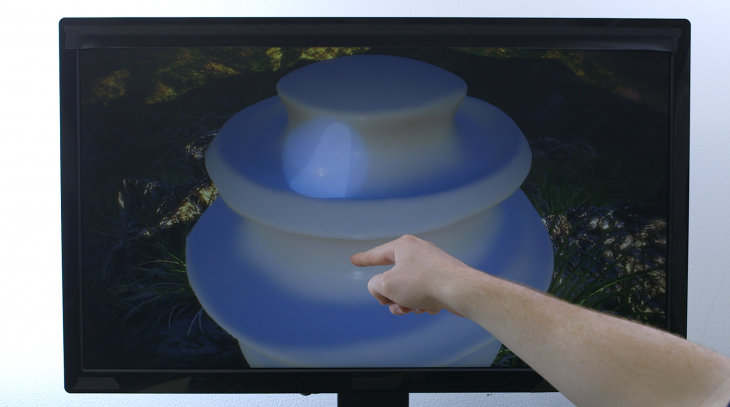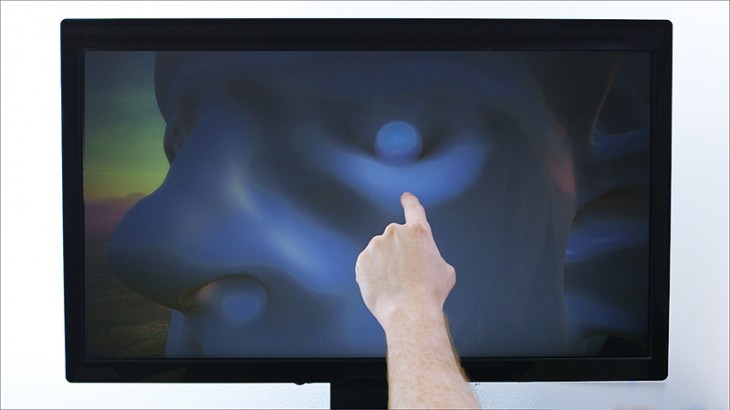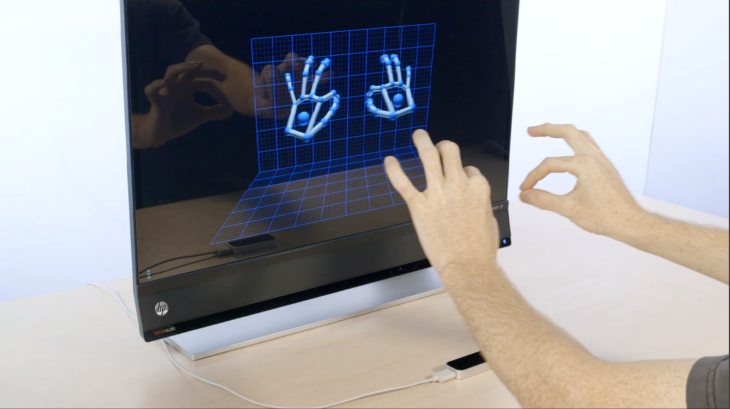
Leap Motion is taking the next step in improving its gesture-controlled design technology. The company launched a new app called Free Form in its Airspace app marketplace that allows anyone to create objects in 3D easily (think Play-Doh). It is also pulling back the curtain on its next-generation tracking system, opening it to developers in a private invite-only stage.
Since its launch three months ago, Leap Motion has seen some impressive bumps in traction. The company tells us that its 3D gesture controller is now in 2,500 stores in 25 countries and will soon name some retail partnerships. It also recently signed a deal with HP to integrate its technology into the Envy 17 laptop.
There’s also no discounting the fact that developers have been drawn to the service, 85,000 in fact — creating more than 150 applications, which is double from what it had in August. Back then, the company said that its apps had been downloaded 1 million times and its SDK installed 25,000 times.
Extending its vision with Freeform
We spoke with Leap Motion’s co-founders, CEO Michael Buckwald and CTO David Holz, about the company’s original vision. They said that the controller wasn’t the “end all, be all” of the company — it was about finding new ways to interact with computers and exploiting its power to create amazing things.
Right now, Leap Motion is available for the desktop, but Buckwald says that additional form factors are being explored, including smartphones and tablets.
In its next steps to realize its vision, Leap Motion is launching Free Form, a new desktop application that lets you create 3D objects easily. Perhaps the best way to think about it is envisioning it as a means to mold Play-Doh virtually. Through the app, users can change the shape of the mold, adjust the brushes, and make a whole assortment of tweaks. Once the object has been properly shaped, it can then be paired with a 3D printer to create a tangible form of it.
While not fully integrated yet, Free Form will have the ability to share GIF captures of your object to the major social networks, including Twitter and Facebook. But while social sharing is cool, what’s even better is the tie-in with 3D printers.
Buckwald says that society is on the “cusp of 3D printing” and there is an emergence of consumer-owned and accessible devices. All images created in Freeform are saved as an .OBJ file and will work with any 3D printer.
Free Form is compatible for both Windows and Mac devices with a minimum operating system of Vista or Mac OS X 10.7. It’s also free to download.
Better tracking means better designs
In order to exploit the potential of computer technology, Leap Motion is also in the process of finessing its latest tracking design software to better understand hand movements. While not available to the general public yet, we’re told that it solves two main problems, specifically that it reduces developer costs to build objects and makes the experience more robust.
Buckwald says that the new software has been a work in progress for over a year and that it’s needed to further improve latency and the overall experience. As he explains it, the existing tracking software on the market lacks the necessary logic to know how to determine what action to take when a hand is positioned in a certain way where fingers overlay each other. Soon, it will have the necessary “smarts” to observe and follow all the joints in your hands to make the required movements.
Specifically, Leap Motion will soon be able to better understand finger-to-finger (pinch) movements, when a user is grasping an object or interacting with it.
This would give developers a lot more flexibility as the software will be able to track movement in a 360-degree view.
The new tracking software is in a private invite-only beta period and the company expects it to be generally available in 2014.
Get the TNW newsletter
Get the most important tech news in your inbox each week.








